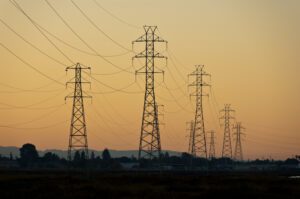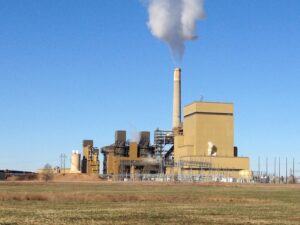On December 23, 2010, one day before the Yuletide season, when members of Congress, the media, and Tea Party activists are least likely to watchdog the federal bureaucracy, the U.S. Environmental Protection Agency (EPA) announced rulemakings to establish New Source Performance Standards (NSPS) for greenhouse gas (GHG) emissions from power plants and refineries. Or maybe "whispered" would be more accurate.
If you didn’t read the text of the EPA’s press release and just skimmed the headline, you would not know the agency had just launched the next phase of its greenhouse gas regulatory program. The release carried this bland and uninformative title: "EPA to Set Modest Pace for Greenhouse Gas Standards/Agency stresses flexibility and public input in developing cost-effective and protective GHG standards for largest emitters."
Then, on Dec. 30, with public attention still diverted by holiday celebration, the EPA published two proposed settlement agreements in the Federal Register outlining the agency’s plans to establish GHG performance standards for utility steam electric generating units and petroleum refineries. The proposed agreements are between the EPA and a gaggle of state, municipal, and environmental litigants.
In a recent (Jan. 19, 2011) alert, VanNess Feldman, a law firm specializing in environmental issues, explains the significance of this under-reported development: "These new regulations have potentially broader reach and impact than the New Source Review (NSR) greenhouse gas rules that became effective on January 2, 2011 under the "Tailoring Rule" timetable. Most notably, the NSPS, notwithstanding their name, can reach not only new and modified facilities but also existing facilities."
Unlike NSR "best available control technology" (BACT) standards, which are determined on a case-by-case basis for each new or modified "major emitting facility," NSPS standards apply in advance to all new or modified major emitters within specific industrial categories. What’s more, as the alert explains, the EPA, working with state environmental agencies, can apply NSPS to existing, non-modified sources.
The Clean Air Act’s NSPS provisions—which require the EPA to set industry-specific performance standards for facilities that emit significant quantities of certain air pollutants—include separate tracks for new and modified facilities (section 111(b)) and existing facilities (section 111(d)). Under section 111(b), the EPA directly establishes NSPS for new and modified facilities. Section 111(d), by contrast, establishes a cooperative federal-state process under which the EPA first establishes "emissions guidelines" for facilities in the relevant category.
These guidelines are then translated by states into enforceable performance standards for facilities within their boundaries. States may apply less stringent standards or longer compliance schedules if they demonstrate that following the federal guidelines is unreasonably cost-prohibitive, physically impossible, or that there are other factors that reasonably preclude meeting the guidelines. States may also impose more stringent standards or shorter compliance schedules in appropriate cases.
The EPA, in cahoots with the usual pro-Kyoto State attorneys general and eco-litigation groups, is engaged in an end-run around democracy. The Clean Air Act was enacted in 1970, years before global warming was even a gleam in Al Gore’s eye. The statute does not even mention "greenhouse gases" or the "greenhouse effect." The Act as amended in 1990 does include the terms "carbon dioxide" and "global warming potential"—but only in the context of non-regulatory provisions, and in each instance followed by a caveat instructing the EPA not to jump to regulatory conclusions (see also). That admonitory language would have no legal effect, and would have been pointless for Congress to include, if, as the Supreme Court mistakenly opined in Massachusetts v. EPA, the agency has separate authority under other provisions to ‘enact’ regulatory global warming policy.
The longer Congress tolerates this usurpation of legislative power, the harder it will be to stop, because firms that spend millions of dollars to comply with a regulation may gain little from its repeal. They may even acquire a vested interest in preserving the rule as a barrier to entry if it hobbles upstarts less able to bear the expense. Moreover, the proposed rulemakings are just step one of a broader campaign to establish GHG performance standards for numerous industrial categories such as steel plants, cement production facilities, and paper mills.
Things are moving swiftly. Under the proposed settlement agreements, the EPA will propose NSPS rules for power plants by July 26, 2011, and finalize them by May 26, 2012, and propose NSPS rules for refineries by December 10, 2011, and finalize them by November 10, 2012. If the Tea Party Congress means to stop the EPA from Kyotoizing America, it must do so in the very near future.
—Mario Lewis (mlewis@cei.org) is a senior fellow at the Competitive Enterprise Institute’s Center for Energy and Environment. This article was originally published at OpenMarket.org, a project of the CEI. It has been edited for style for this publication.









